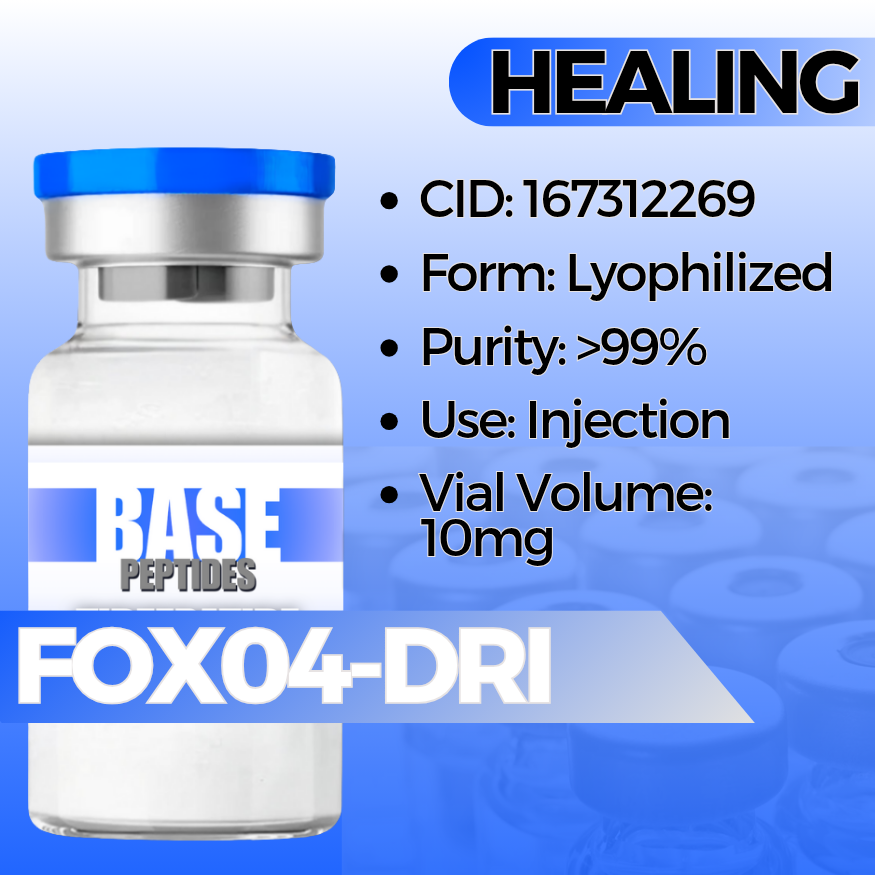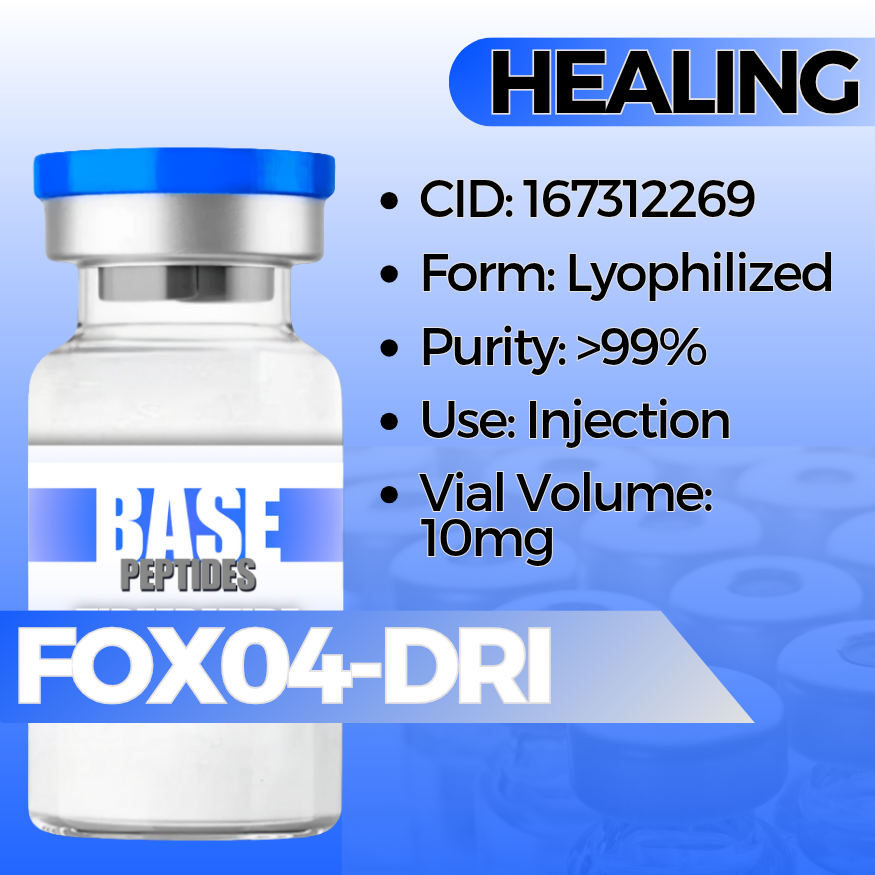FOX04-DRI
FOX04-DRI
Base Peptides are intended for licensed medical professionals and experienced researchers. Reconstitution required. Dosing and use instructions are not provided.
Couldn't load pickup availability
FOXO4-DRI (FOx04) — Senolytic Peptide Targeting FOXO4/p53 Interaction
FOXO4-DRI is a synthetic, cell-penetrating peptide designed to disrupt the interaction between the transcription factor FOXO4 and TP53 (p53), thereby selectively inducing apoptosis in senescent cells. It is used in research settings focused on cellular senescence clearance, aging biology, and tissue-repair/resilience models.
- Synonyms: FOXO4 D-Retro-Inverso (FOXO4-DRI), Proxofim
- CAS No.: 2460055-10-9
- Description: Retro-inverso peptide variant of FOXO4 sequence; binds p53 and induces apoptotic signalling in senescent cells. [oai_citation:1‡Peptide Sciences]
- Class: Senolytic peptide / protein–protein interaction disruptor
- In senescent cells, FOXO4 binds p53 and prevents apoptosis; FOXO4-DRI interferes with this binding → p53 is released and triggers apoptosis in those senescent cells.
- This mechanism selectively targets cells that express elevated FOXO4 (senescent cells) while sparing many healthy cells.
- To eliminate senescent (“zombie”) cells in vitro and in vivo, and thereby study the resulting effects on tissue regeneration, inflammation (SASP), and aging phenotypes.
- To probe fibrosis, cartilage repair, and organ ageing models by reducing senescence burden.
Key Study Themes — What’s Typically Observed
Senescence Clearance & Tissue Fitness
- What was tested: Administration of FOXO4-DRI in aged and chemotoxic mouse models; endpoints included senescent cell markers (SA-β-gal), tissue function (kidney), coat/fur appearance.
- What changed: Reduced senescent cell burden; improved tissue health metrics (e.g., kidney, fur, mobility).
- Why it matters: Supports the concept of “senolytics” — clearing senescent cells to rejuvenate tissue function.
Fibrosis & Myofibroblast Models
- What was tested: FOXO4-DRI in bleomycin-induced pulmonary fibrosis models; endpoints included ECM-receptor interaction genes, myofibroblast counts. [\
- What changed: Lowered myofibroblast differentiation and ECM deposition; improved lung histology.
- Why it matters: Demonstrates pathway for senolytic peptides in fibrotic disease research.
Potential Research Applications
Aging & Healthspan Models
- Senescent-cell clearance in lifespan/health-span experiments, tissue regeneration studies.
Fibrosis & Tissue Remodelling
- Organ fibrosis (lung, liver, kidney), ECM-remodelling, myofibroblast signalling.
Senescence-Associated Secretory Phenotype (SASP) Studies
- Inflammation, cytokine profiling after senescent cell ablation.
Synergistic / Comparator Peptides & Agents
DQY-peptide Senolytics / Bcl-2 Inhibitors
- Why compare: Different mechanism of senescent cell elimination (e.g., Bcl-2/Bcl-xL inhibitors) vs FOXO4-DRI’s p53/FOXO4 axis.
Senolytic Small Molecules (e.g., Navitoclax)
- Why compare: Small molecule vs peptide senolytic modalities—contrast dose, specificity, clearance.
GHK-Cu / MOTS-c (Repair / Mitochondrial Support)
- Why pair: Combine senescent-cell clearance (FOXO4-DRI) with mitochondrial repair/regeneration peptides for integrated anti-aging research.
What’s in the Vial (Editable)
| Active | Per Vial | Grade / Purity |
|---|---|---|
| FOXO4-DRI Synthetic Peptide | 10 mg (customize per SKU) | Research grade, ≥ 98% (HPLC/MS) – validate. |
| Appearance | Lyophilized white/off-white powder; store under desiccated conditions | |
Specifications & Handling
- Form: Lyophilized peptide powder (lot-coded)
- Storage: ≤ −20 °C, protect from humidity and light; minimize freeze/thaw cycles
- Reconstitution: Use sterile aqueous buffer; record solvent, concentration, and time-to-assay; avoid repeated freeze–thaw
- Labeling: Research Use Only; lot/SKU/expiry clearly displayed
Known Concerns (Context)
- Translational readiness: Much of the data remains pre-clinical; human safety and dosage data are very limited.
- Cell specificity: Though senescent-cell selective in models, off-target effects need careful design and controls.
- General: For laboratory research use only; not for human consumption, medical or veterinary use.
Regulatory & Use Notice
Sold for laboratory research use only. Not for human consumption, medical, or veterinary use. No human-use instructions are provided. Buyer is responsible for safe handling, regulatory compliance, and jurisdictional legality.
FOXO4-DRI (FOx04) Senolytic Peptide | Targeted Apoptosis of Senescent Cells | Aging, Fibrosis & Tissue-Repair Research


